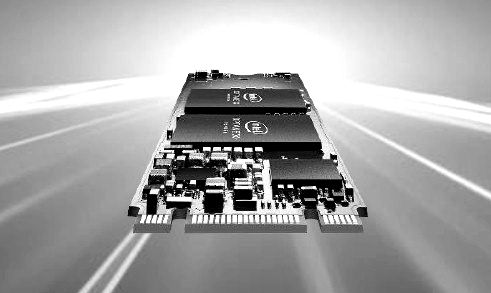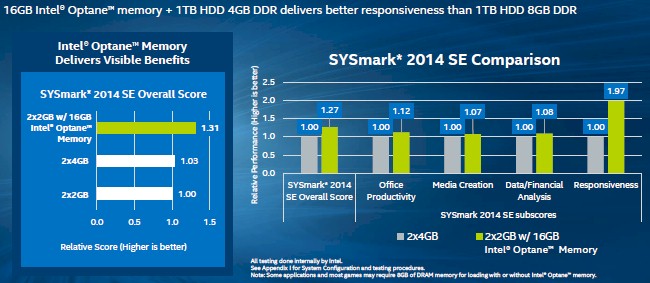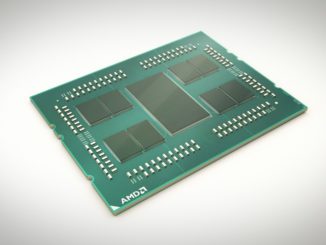
The ramp for Intel’s Optane 3D XPoint memory, which sits between DDR4 main memory and flash or disk storage, or beside main memory, in the storage hierarchy, is going to shake up the server market. And maybe not in the ways that Intel and its partner, Micron Technology, anticipate.
Last week, Intel unveiled its first Optane 3D XPoint solid state cards and drives, which are now being previewed by selected hyperscalers and which will be rolling out in various capacities and form factors in the coming quarters. As we anticipated, and as Intel previewed last fall, the company is also rolling out Optane memory sticks in the M.2 form factor, which splits the difference between a traditional DRAM memory module and a non-volatile memory card that plugs into a more traditional PCI-Express x8 peripheral slot.
The M.2 2280 form factor, which measures 22 millimeters by 80 millimeters, has room for a PCI-Express x2 slot and two fat Optane memory chips plus the electronics to make it look like a regular PCI-Express card. At the moment, the consumer-grade Optane M.2 cards that Intel has just announced come in 16 GB and 32 GB capacities and while we have only tangential performance information on these devices, we think that hyperscalers that have been using M.2 devices to boot operating systems and other software on their servers will be interested in using Optane devices as fast caches and extended memory where latency and total cost of ownership factors outweigh those of high capacity. The initial Optane 3D XPoint card comes with 375 GB of capacity and costs $1,520 at list price, plus another $431 on top of that if you want to pool the Optane memory with the DDR4 memory in a system using the Memory Drive Technology memory hypervisor. That works out to about $4 per GB for the raw Optane SSD, and that is about one-tenth the cost per GB of relatively skinny DDR4 memory sticks that are about one-tenth the capacity; the price/performance spread is even larger with fatter DRAM memory modules, which can cost nearly two or three times as much per unit of capacity. As we explained in our detailed analysis of Optane memory for servers, this Optane memory can be used to get more memory capacity for the dollar without sacrificing performance, or to act as a fast caching layer sitting in front of more capacious and less expensive flash or disk drive storage. Or both.
But if you only need modest memory expansion, or just lower cost memory, or a smidgen of caching, and you can find a motherboard or a system with one or two M.2 slots, then these commercial grade M.2 slots could be very useful indeed – particularly if they are more widely available than the full sized Optane cards and drives.
The M.2 memory sticks certainly are a lot less expensive. The 16 GB version of the M.2 2280 card costs $44, or $2.75 per GB, and the 32 GB unit costs $77, or $2.41 per GB. This is considerably less expensive than DRAM in equivalent capacities, and we think it could take off for more than booting system software considering that the M.2 devices provide the equivalent of a PCI-Express 3.0 x2 slot for connectivity into the compute complex. Four of these are as good as one Optane card in terms of connectivity back to the CPU and out to the network.
For now, Intel is pairing the Optane M.2 sticks with its “Kaby Lake” 7th generation of Core processors for PCs, gamer systems, and workstations, and it has created systems software it calls Rapid Storage Technology that automatically pairs an Optane M.2 device with a flash or disk drive to create a unified tiered storage pool. This software keeps the hottest data on the Optane drives and over time it figures out what application files also need to be moved to Optane drives to be accelerated. There is no good reason at all that Rapid Storage Technology should not be allowed on servers, and should not be allowed to span as many M.2 devices paired to flash or disk storage devices as customers want. But thus far Intel has not said anything about this. You can bet hyperscalers and cloud builders are already playing with the M.2 devices, and more than a few storage array makers are probably trying to figure out how to make a shared storage device with lots and lots of M.2 cards that will ramp in the commercial space and drive the Optane cost down farther and faster than it will with its full-on PCI cards and drive form factor SSDs using 3D XPoint memory.
The price/performance arguments that Intel is making for high-end PCs work just as well for servers. Here are the feeds and speeds:
When it comes to PC and application responsiveness, Intel is telling customers that a PC equipped with 4 GB of DDR4 main memory plus 16 GB of Optane M.2 memory and a 1 TB disk drive will deliver better responsiveness on the SYSmark SE 2014 benchmark test than simply boosting the main memory to 8 GB and not using any Optane memory in from of that 1 TB drive.
It is intriguing to think of what a server might look like next year when Optane DIMMs, which will plug into DDR4 memory slots, plus Optane M.2 cards sprinkled in and maybe a mix of Optane SSDs alongside flash drives and disk drives can all be put into the same machines. What will companies test, much less choose? Will they just go with the server parts as Intel proscribes or will they monkey around with consumer grade M.2 cards and get into to support them in server chipsets. On PCs, the older 100 series chipsets for Core processors cannot support the M.2 Optane devices, so it is not just a matter of having an M.2 slot. Intel is making a system play, and wants to use Optane to help encourage customers to upgrade to Kaby Lake Core chips in their PCs. It may push the Optane U.2 and PCI-Express cards in servers and deflect interest away from the less capacious and even less costly M.2 devices with “Skylake” Xeon processors coming this summer or so.
It might not be long before people start making storage arrays – or storage servers if they have compute – based on M.2 devices, given the economics and the performance. One Stop Systems showed off an M.2 array with 224 flash memory sticks in 61 carriers back in the summer of 2015, and that experimental device had a capacity of 262 TB. A mix of Optane 3D XPoint and NAND flash using M.2 memory sticks could provide the right mix of performance and capacity at a very attractive price.






So optane memory is worth an upgrade?